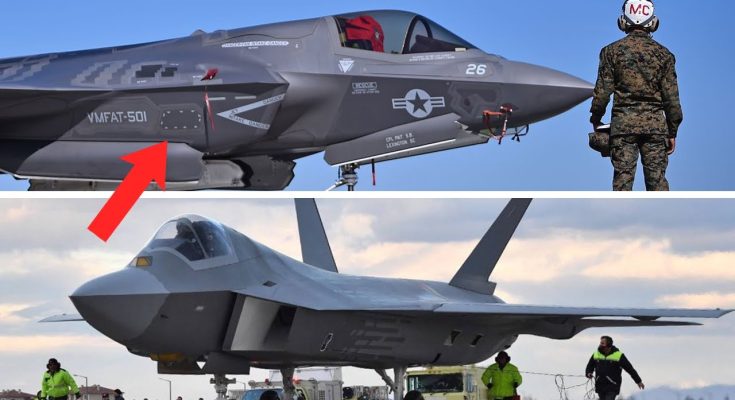In the rapidly advancing world of military aviation, Turkey’s TFX KAAN and the American F-35 Lightning II represent two distinct approaches to next-generation fighter jet design. Both jets are poised to serve as the backbone of their respective nations’ air forces, yet they embody different philosophies of technological innovation and combat effectiveness. This analysis compares the two aircraft, examining their capabilities, features, and the strategic implications of their respective designs.
TFX KAAN: Turkey’s Indigenous Stealth Fighter
The TFX KAAN is Turkey’s ambitious project to develop an indigenous stealth fighter to rival the world’s most advanced aircraft. Built by Turkish Aerospace Industries (TAI), the TFX KAAN aims to replace the aging fleet of F-4 Phantoms and F-16 Fighting Falcons in the Turkish Air Force, positioning Turkey as a key player in the global defense industry.
Key Features of the TFX KAAN
- Stealth and Design: The TFX KAAN’s design incorporates advanced stealth technologies to minimize radar cross-section, making it less detectable by enemy radar. It features a sleek, angular body with composite materials to reduce its visibility.
- Advanced Avionics and Systems: The aircraft is equipped with cutting-edge avionics, including an advanced radar system and an electronic warfare suite designed to provide superior situational awareness in hostile environments.
- Multirole Capability: The TFX KAAN is designed for multirole operations, capable of executing air superiority, strike, and reconnaissance missions. It will be fitted with a range of weapons, including air-to-air and air-to-ground missiles.
- Domestic Production: As an indigenous project, the TFX KAAN is designed to reduce Turkey’s reliance on foreign defense contractors, enabling greater self-sufficiency and control over its defense capabilities.
F-35 Lightning II: America’s Stealth Superiority
The F-35 Lightning II, developed by Lockheed Martin, is a fifth-generation stealth fighter designed for multirole capabilities. It has been adopted by multiple NATO countries, making it a cornerstone of Western air power. The F-35 comes in three variants—F-35A (conventional takeoff and landing), F-35B (short takeoff and vertical landing), and F-35C (carrier-based)—and is renowned for its versatility and advanced technologies.
Key Features of the F-35
- Stealth and Situational Awareness: The F-35 is one of the most stealthy aircraft ever built, with a design focused on minimizing radar signature. Its sensor fusion technology integrates data from radar, infrared, and electronic warfare systems, providing unparalleled situational awareness for the pilot.
- Multirole Capability: The F-35 is designed for a wide range of missions, including air-to-air combat, ground attack, intelligence gathering, and close air support. Its ability to perform in diverse environments makes it the most versatile fighter in the U.S. arsenal.
- Global Interoperability: The F-35 is used by a wide range of international allies, enabling seamless integration and cooperation in joint operations. This widespread adoption increases the effectiveness of NATO’s collective defense strategies.
Comparison: TFX KAAN vs. F-35 Lightning II
- Stealth and Design: Both the TFX KAAN and F-35 are built with stealth in mind, though the F-35 has been extensively tested and proven in operational settings. While the TFX KAAN is still in development, it will likely incorporate similar stealth features to match the F-35’s low radar profile. However, the F-35’s design has already set the standard for stealth in modern aircraft.
- Avionics and Systems: The F-35 is equipped with some of the most advanced avionics available, including sensor fusion and next-generation radar. The TFX KAAN, although incorporating advanced systems, will likely need to match or exceed the capabilities of the F-35’s integrated systems to remain competitive.
- Multirole Capability: The F-35 is known for its exceptional multirole versatility, with a proven track record in combat missions. The TFX KAAN aims to provide similar flexibility, though its performance in various mission sets will need to be proven once it enters service.
- Global Interoperability: The F-35 has a massive advantage in terms of global interoperability. With dozens of nations using it, the F-35 provides a powerful tool for joint operations, something the TFX KAAN lacks at the moment, given its regional deployment in Turkey.
- Cost and Production: The TFX KAAN, being a domestic project, could be significantly cheaper for Turkey compared to the F-35, particularly considering the high costs associated with F-35 acquisition and maintenance. This could make the TFX KAAN an attractive option for countries seeking to build up their air forces without relying on foreign contracts.
Strategic Implications
The TFX KAAN marks a significant step in Turkey’s ambition to become a self-sufficient military power, reducing its dependence on foreign military suppliers. By developing its own stealth fighter, Turkey is positioning itself as a formidable force in the Middle East and beyond. While the F-35 remains the gold standard in stealth and multirole capability, the TFX KAAN’s successful development could challenge the global dominance of the American fighter, particularly in regions where cost and indigenous production are key considerations.
In conclusion, while the F-35 Lightning II continues to lead in terms of operational experience and global interoperability, the TFX KAAN represents a bold move by Turkey to assert its position as a rising power in the world of military aviation. The future of air combat may very well depend on the success of both these next-generation fighter jets, as they each offer distinct advantages in their respective military contexts.



